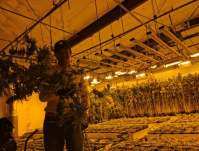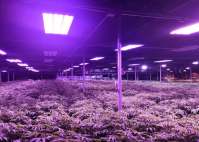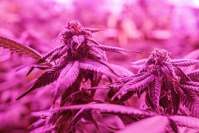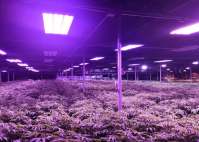What are the effects of LED grow light spectrum on plants?
The most sensitive area of plants to the spectrum is 400-700nm. This region of the spectrum is usually called the effective energy region of photosynthesis. Therefore, when the LED grow light is used to supplement the amount of light, the spectral distribution of the LED grow light source should also be close to this range. The most effective spectrum for plant growth
The photon energy injected by the LED grow light source varies with wavelength. The energy of a wavelength of 400nm (blue light) is 1.75 times the energy of 700nm (red light). The effect of the two wavelengths is the same. The excess energy in the blue spectrum of LED grow lights that cannot be used for photosynthesis turns into heat. The speed of photosynthesis of plants is determined by the number of photons that plants can absorb in the 400-700nm range. It is generally believed that the color of light will affect the speed of photosynthesis.
Plants have different sensitivity to all spectra. This is because of the special absorption of the pigment in the leaves. Among them, chlorophyll is the most well-known. But chlorophyll is not the only useful pigment for photosynthesis. Other pigments are also involved in photosynthesis, and the efficiency of photosynthesis cannot only consider the absorption spectrum of chlorophyll.
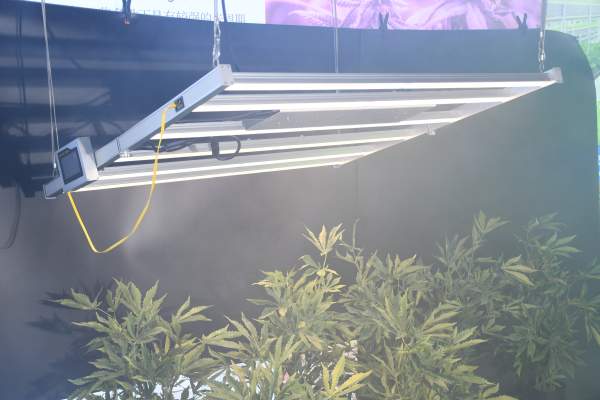
The difference in photosynthesis path is also not related to color. Light energy is absorbed by chlorophyll and carotene. Energy is converted into glucose and oxygen by fixing water and carbon dioxide by two photosynthetic systems. This process utilizes all visible light spectrums, so the effects of light sources of various colors on photosynthesis are almost different.
Some researchers believe that the orange light part has the greatest photosynthesis capacity. This does not mean that plants should be planted on this monochromatic light source. For the morphological development and leaf color of plants, plants should receive a variety of balanced light sources.
The blue light source (400-500nm) of LED grow light is very important for plant differentiation and stoma regulation. Insufficient cyan light, too much far-red light, overgrowth of stems, and easy yellowing of leaves. The ratio of the energy of the red spectrum (655~665nm) of the LED grow light to the energy of the far red spectrum (725~735nm) is between 1.0 and 1.2, and the development of plants is growing. Each plant has a different sensitivity to these spectral ratios.
Under sunlight, blue light energy accounts for 20%. For LED grow lights, such a high proportion is not required. For normally developing plants, most plants only need 400-700 nanometer blue energy. LED grow lights do not need to add more blue spectrum. But it is not not added, the red and blue light of LED grow lights must be properly matched to give plants better growth.
No matter what kind of demand, Yaorong Technology independently developed a variety of LED grow lights for leafy vegetable cultivation, solanaceous fruit cultivation, medicinal plant cultivation, etc., which have achieved improvements in crop yield and quality, and shortened crop growth cycles. Obvious results have been achieved.
Compared with traditional plant lamps such as incandescent lamps, high-pressure sodium lamps and metal halide lamps, LED grow lamps have the advantages of high light efficiency, energy saving, low heat generation and low light decay. Another important secret weapon is the LED spectral band coverage. wide.
The spectrum of LED grow lights can cover the wavelength range of 200-950 nm, and there are dozens of monochromatic lights. In addition, the phosphor can be excited by the monochromatic LED chip to broaden the half-wave width of monochromatic light, or obtain full-spectrum white light. Or monochromatic light composite spectrum, and realize the spectrum customization of different plants.


